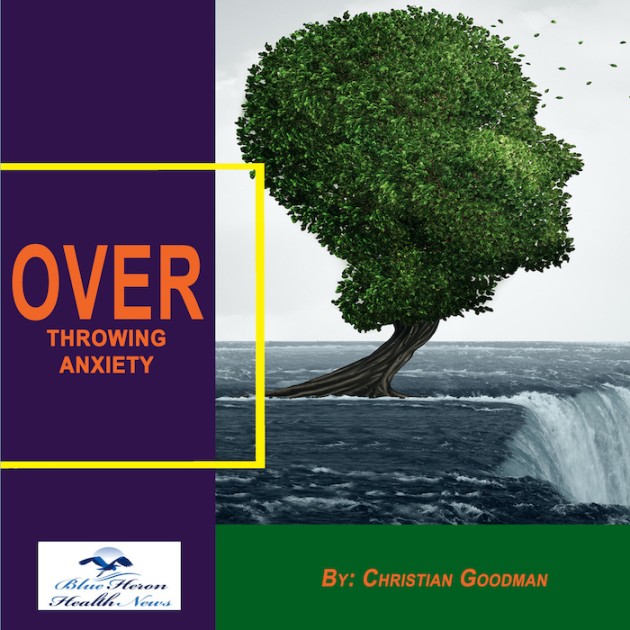
Overthrowing Anxiety™ By Christian Goodman This eBook includes a complete program to treat anxiety effectively. It guides you to learn the ways to find, understand, and accept the main cause of your anxiety and start using the techniques provided in it to treat the problem. You can use your laptop, desktop, smart phone, or tablet to access this program in the eBook format anywhere in this world.
What are the differences in anxiety prevalence among different ethnic groups in the USA?
Anxiety disorders are common in the United States, but the prevalence and experience of anxiety can vary significantly among different ethnic and racial groups. These variations are influenced by factors such as cultural attitudes toward mental health, socioeconomic status, access to healthcare, and exposure to unique stressors. Here’s a detailed overview of the differences in anxiety prevalence among various ethnic groups in the USA:
1. Overall Prevalence and Ethnic Differences
a. Non-Hispanic Whites
- Higher Reporting Rates: Non-Hispanic Whites often report higher rates of anxiety disorders compared to other ethnic groups. This could be partly due to greater awareness and acceptance of mental health issues, leading to more frequent diagnosis and treatment.
- Prevalence: The prevalence of anxiety disorders in this group is estimated to be around 19-20%.
b. African Americans
- Underreporting and Diagnosis Challenges: African Americans may underreport symptoms of anxiety due to stigma, distrust in the healthcare system, or different cultural expressions of distress. This can lead to underdiagnosis or misdiagnosis.
- Prevalence: The prevalence of anxiety disorders among African Americans is reported to be lower than that of non-Hispanic Whites, generally around 8-10%. However, when African Americans do experience anxiety, they may have more severe symptoms.
c. Hispanic/Latino Americans
- Cultural Factors and Expression: Hispanic/Latino Americans may express anxiety symptoms differently, often focusing on physical symptoms rather than emotional or cognitive symptoms. Cultural norms can influence how anxiety is perceived and discussed.
- Prevalence: The prevalence of anxiety disorders in this group is estimated to be around 7-10%. There are variations within the Hispanic/Latino population based on factors like country of origin, level of acculturation, and language proficiency.
d. Asian Americans
- Cultural Stigma and Somatization: In many Asian cultures, mental health issues are stigmatized, which can lead to underreporting and a preference for expressing psychological distress through physical symptoms (somatization).
- Prevalence: Anxiety disorder prevalence among Asian Americans is estimated to be lower, around 6-8%. However, barriers to seeking help and cultural stigma can lead to less frequent diagnoses.
e. Native Americans
- Historical Trauma and Socioeconomic Challenges: Native Americans face unique stressors, including historical trauma, discrimination, and socioeconomic challenges, which can contribute to higher rates of mental health issues, including anxiety.
- Prevalence: While specific data on anxiety disorders is limited, Native Americans are believed to experience higher rates of anxiety, often associated with other mental health issues like PTSD and depression.
2. Contributing Factors to Differences in Anxiety Prevalence
a. Cultural Attitudes and Stigma
- Mental Health Stigma: Different cultural attitudes toward mental health can influence the prevalence and reporting of anxiety disorders. In some cultures, mental health issues may be seen as a sign of weakness or shame, leading to reluctance in seeking help.
- Expression of Symptoms: Cultural differences in the expression of anxiety symptoms can affect diagnosis. For example, some cultures may emphasize physical symptoms over emotional or cognitive symptoms.
b. Socioeconomic Status
- Access to Healthcare: Socioeconomic status affects access to mental health services, with lower-income groups often facing barriers to care. This can lead to untreated anxiety disorders and a lack of accurate prevalence data.
- Financial Stress: Financial insecurity and related stressors can contribute to higher anxiety levels, particularly in economically disadvantaged communities.
c. Immigration and Acculturation Stress
- Acculturative Stress: Immigrants and their descendants may experience acculturative stress, which includes challenges related to adapting to a new culture, language barriers, and identity conflicts. This stress can contribute to anxiety disorders.
- Legal Status and Discrimination: Issues related to immigration status and experiences of discrimination can exacerbate anxiety, particularly in Hispanic/Latino and Asian American communities.
d. Trauma and Discrimination
- Historical and Intergenerational Trauma: Certain groups, such as African Americans and Native Americans, may experience higher rates of anxiety due to the intergenerational transmission of trauma and ongoing experiences of systemic discrimination.
- Racism and Discrimination: Experiences of racism and discrimination can contribute to chronic stress and anxiety, affecting both the prevalence and severity of anxiety disorders in minority groups.
e. Utilization of Mental Health Services
- Underutilization: Minority groups often underutilize mental health services due to factors such as lack of access, cultural mistrust of healthcare providers, language barriers, and a shortage of culturally competent mental health professionals.
- Treatment Differences: Even when services are accessed, there can be differences in the type and quality of treatment received, with minority groups sometimes receiving less effective care.
Conclusion
The prevalence of anxiety disorders in the USA varies significantly among different ethnic groups, influenced by cultural, socioeconomic, and systemic factors. While some groups report lower prevalence rates, this may be due to underreporting, cultural stigma, and barriers to accessing care rather than an actual lower incidence of anxiety disorders. Understanding these differences is crucial for developing culturally sensitive mental health services and improving access to care for all ethnic groups. Addressing these disparities requires a comprehensive approach that includes education, reducing stigma, improving access to culturally competent care, and addressing the broader social determinants of health.
Overthrowing Anxiety™ By Christian Goodman This eBook includes a complete program to treat anxiety effectively. It guides you to learn the ways to find, understand, and accept the main cause of your anxiety and start using the techniques provided in it to treat the problem. You can use your laptop, desktop, smart phone, or tablet to access this program in the eBook format anywhere in this world.
